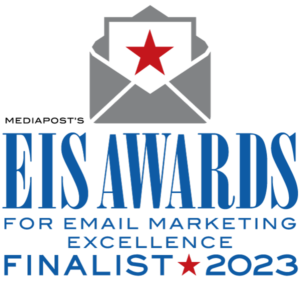Symbolically Speaking – Hard Facts on a Soft Approach
By Guy Hanson | Director, Response Consulting , Professional Services on Tuesday, December 4, 2012
The use of symbols in email subject lines is a hot topic amongst email marketers today. Despite their popularity, marketers raise concerns whether email recipients may view the use of symbols as “spammy” or if symbols may cause spam filters to deliver the emails to the spam folder. Using competitive email intelligence data, the effectiveness of this tactic can finally be observed by anyone.
Both Expedia UK and British Airways recently sent emails using symbols in the subject lines a few days apart.

In both cases, the “Read Rate”, the rate at which subscribers read an email regardless of enabled images or text-only formatting, for these broadcasts were approximately a quarter lower than their corresponding 90-day averages. Subscribers may already have a sense of: “Travel companies using airplanes? Yawn!”
Type of offer and/or seasonality may contribute to the lower read rate, as well. It is notable, however, that the decline in engagement was similar for both brands.
The flip side of the engagement coin is that spam folder placement for these broadcasts were only a third of their corresponding 90-day averages, meaning there was no issue with emails delivered to the spam folder using this approach.
The use of symbols in subject lines is effective when applied with a tactical objective in mind. Three noteworthy examples stand out from others using the same tactic:·
Large “Entertainment/Retail” Company

In this case, the premise was clear: use a bold « character in the subject line to attract attention.
The results? The competitive email intelligence data showed lower rates of subscribers deleting without reading the emails, as well as lower subscriber spam complaints for the test cell using the « symbol.The marketer also confirmed that open rates for the test cell with the « in the subject line were 7% higher than for the control cell while click rates were 17% higher. The use of symbols in the subject line clearly worked.·
BeNaughty
This leading online dating company employs a double opt-in sign-up process. If the confirmation, or activation, email fails delivery to the inbox or read by the subscriber, BeNaughty loses a potential customer. BeNaughty tested an approach whereby non-responders to the first activation email received a follow-up with Y characters at the beginning and end of the subject line:

There was a near two-thirds reduction in subscribers reporting email as spam, and a near one-third reduction in emails deleted and unread. There was a surprising after effect of this tactic as well: an uplift in the number of people forwarding the email to their friends and family.
Igor Fuks, Systems Analyst for the BeNaughty program, corroborated the positive impact of this approach, sharing data to demonstrate that email open rates improved by one-sixth and click-through rates by one-third where employed.
Voyage Privé
The premium travel brand uses symbols in subject lines in a rather clever way:

Here, the distinctive characters provide an easy to understand visual categorisation of the types of offers contained in the emails.
Comparing the subscriber engagement of Voyage Privé emails that use this approach with those that do not shows the results are clear-cut:

The approach clearly worked. More people read the email, and less people deleted without reading it.
Laurent Dupé, program owner at Voyage Privé, confirmed that the tactic led to a “clear uplift” in program performance.
There are two things marketers can learn from this analysis:·
Symbols in subject lines add value to the user experience, as opposed to being a mere marketing gimmick.·
Traditional email metrics, such as open rate and click rate, do not provide the full performance picture for email marketers.
Marketers need to understand whether the variance in their subscriber engagement metrics is positive or negative, and the impact that this has on both their ability to reach the inbox and response metrics.
This post originally appeared (in German) on ECIN.





